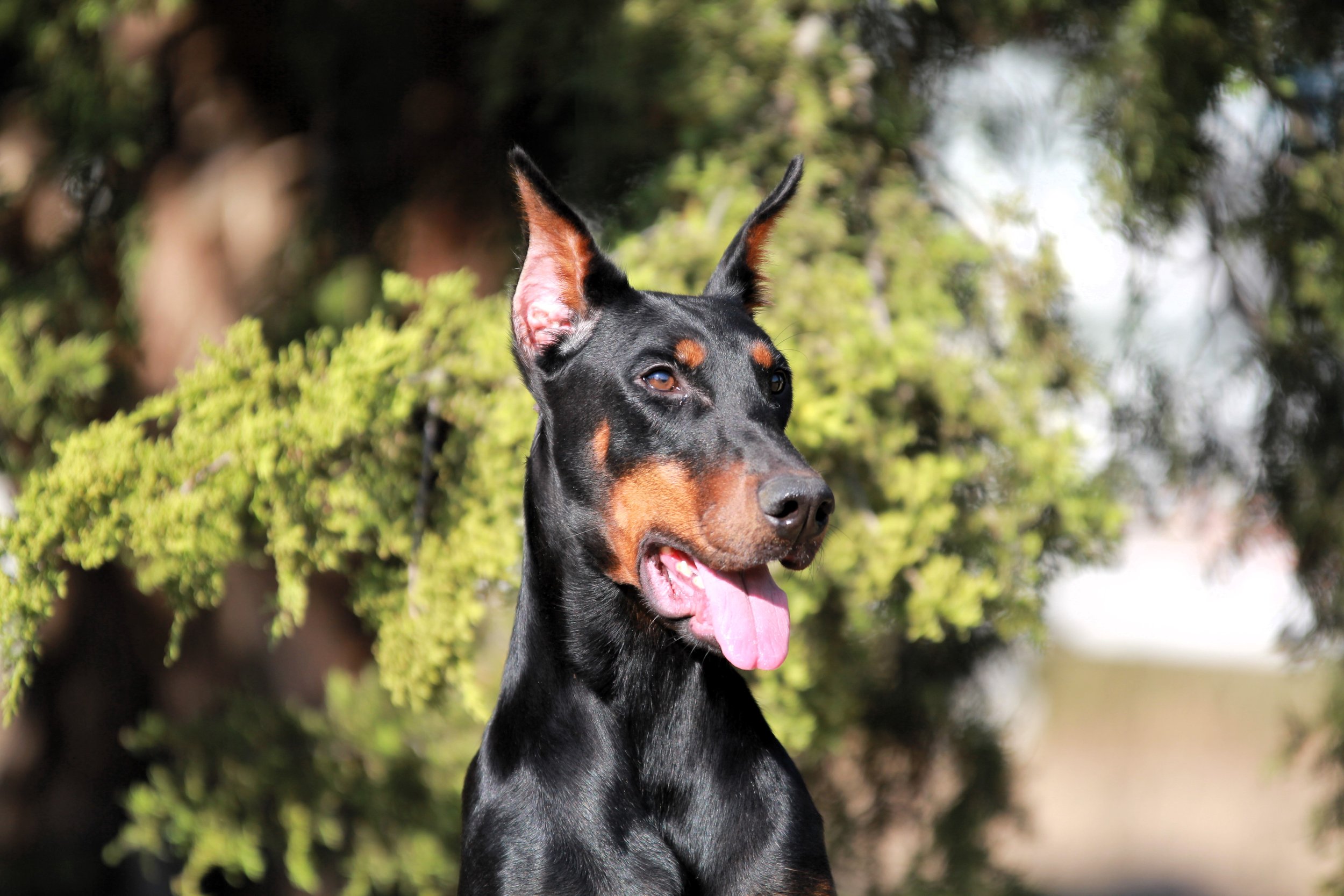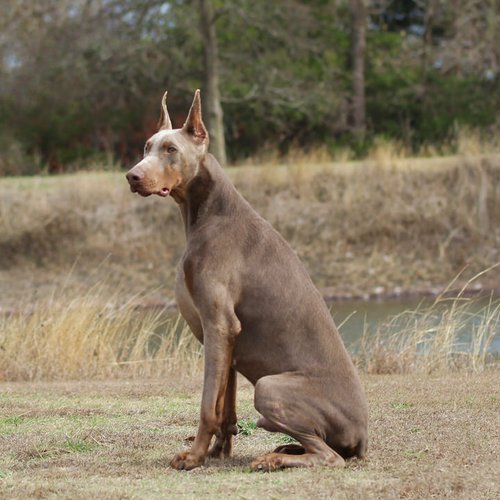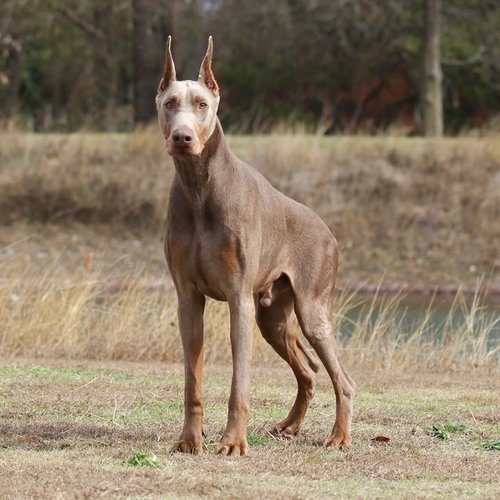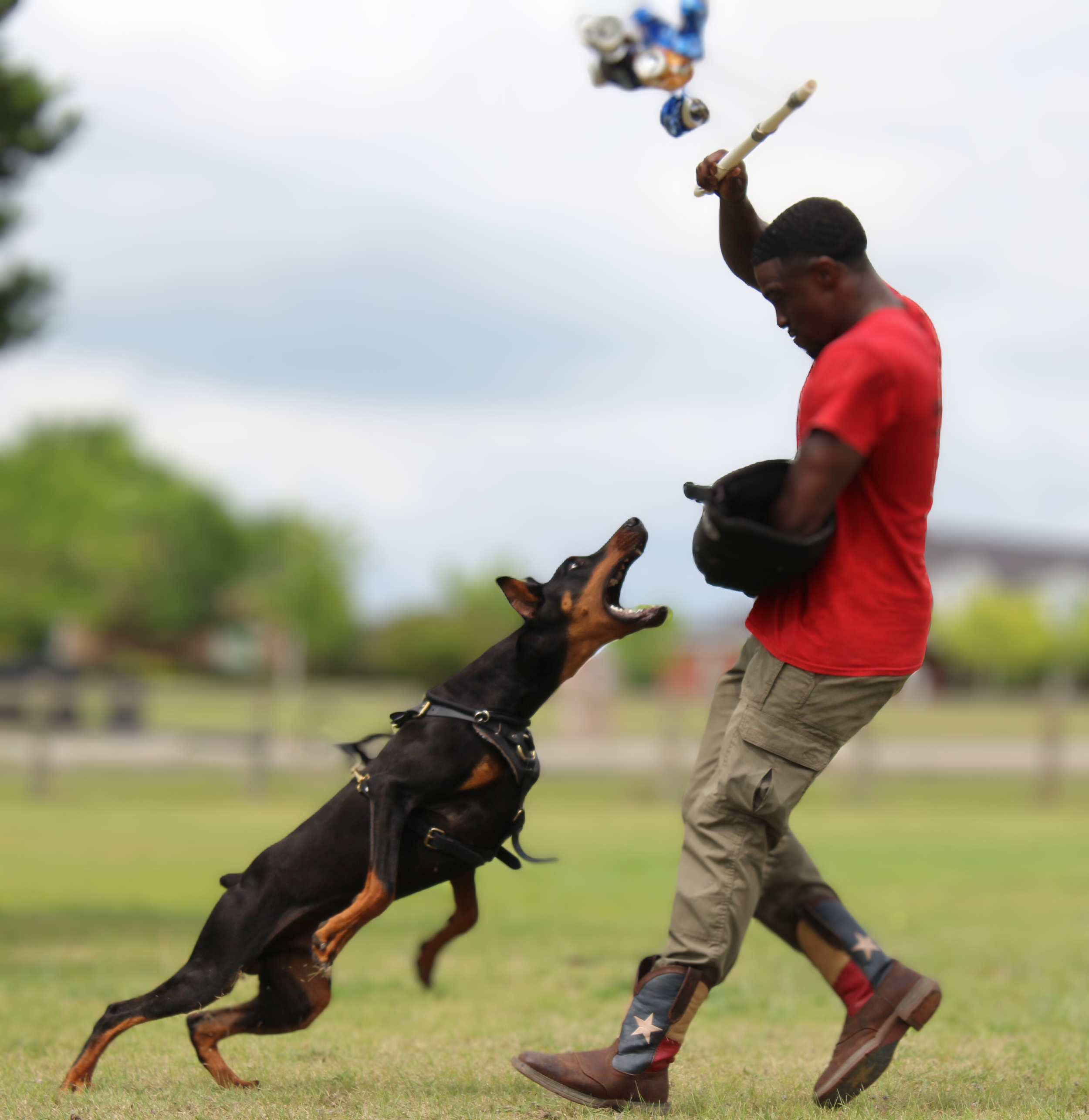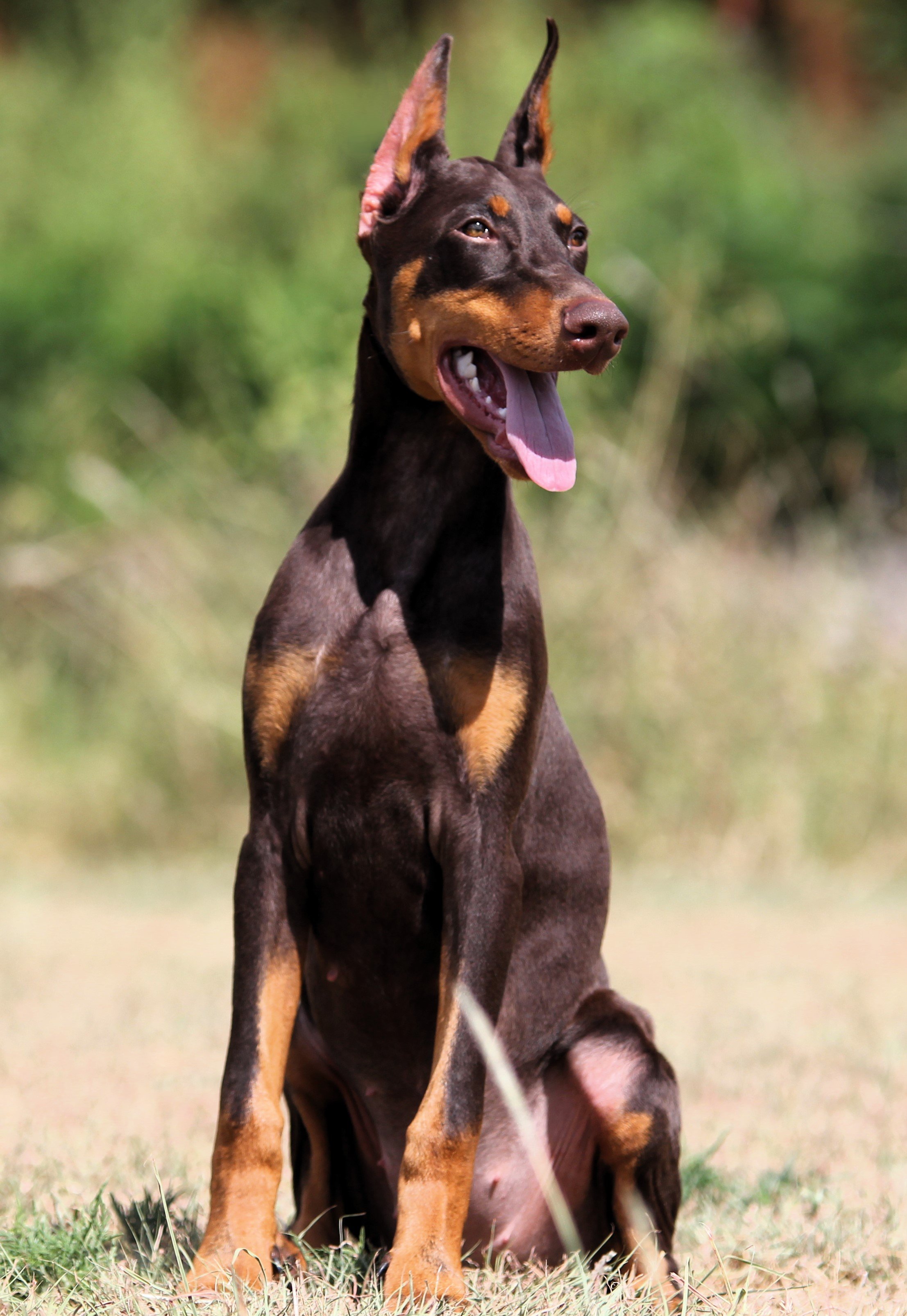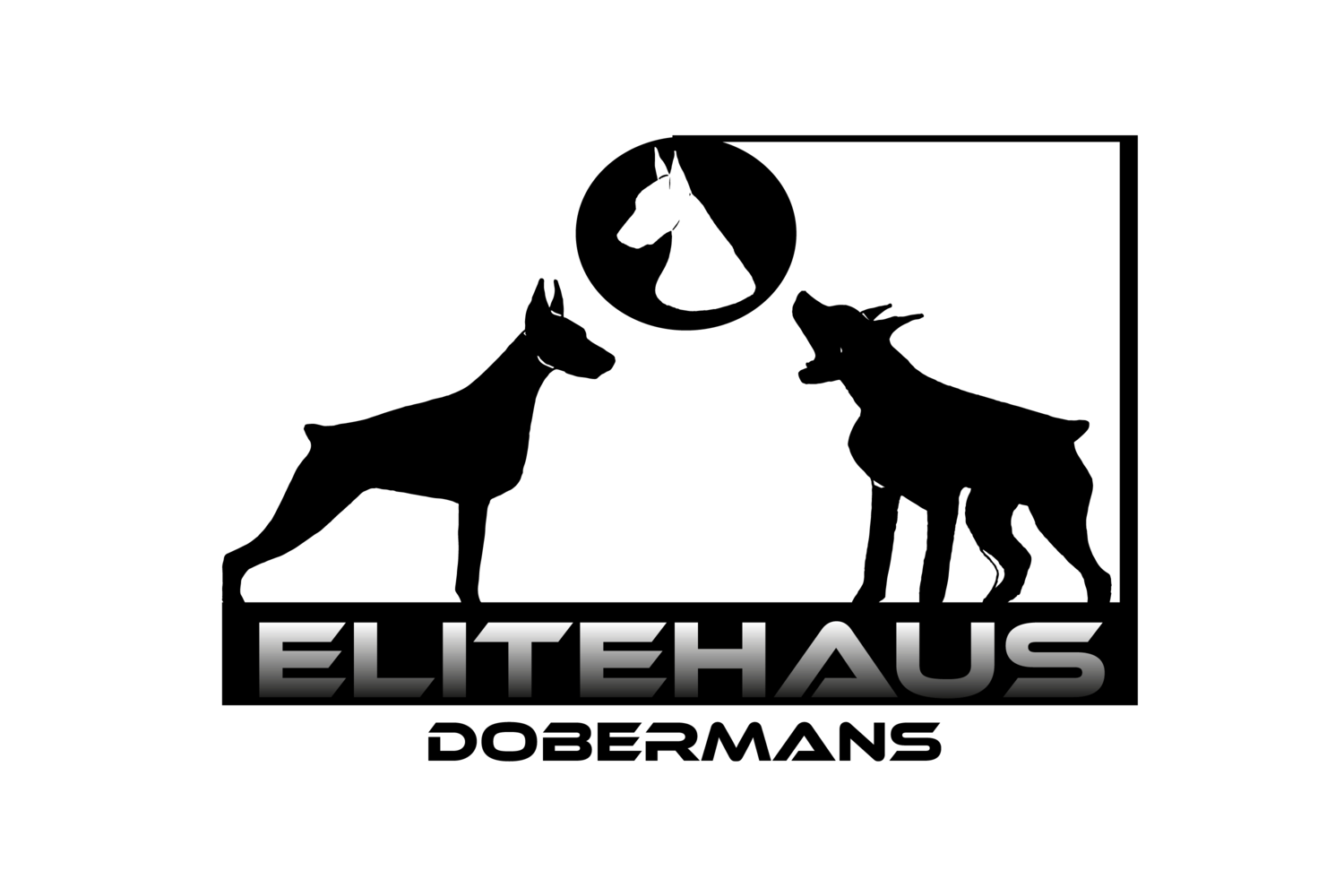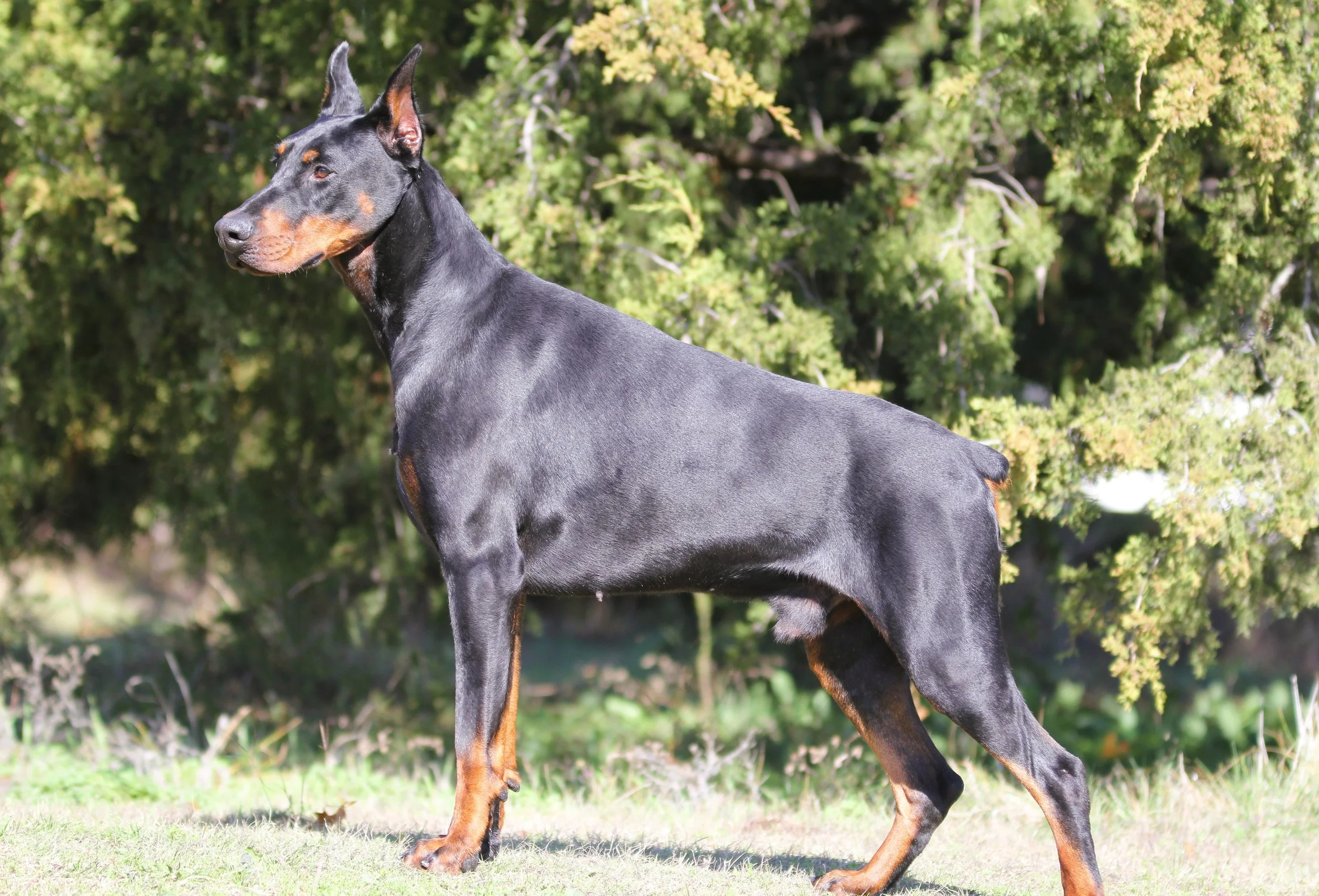About the doberman
The Doberman Pinscher is a sleek, powerful, and highly intelligent dog breed that is renowned for its protective nature, loyalty, and versatility. Originally developed in Germany in the late 19th century, the Doberman has become one of the most popular breeds for personal protection, police work, and as a family companion. It is a breed that strikes a balance between elegance, athleticism, and alertness.
Origin and History
The Doberman Pinscher was developed in Germany by a tax collector named Karl Friedrich Louis Dobermann in the 1890s. Dobermann wanted a dog that was both protective and loyal, capable of accompanying him on his rounds and guarding his property. He began breeding various dogs, including the Rottweiler, Greyhound, German Pinscher, and Weimaraner, to create a breed with the qualities he desired—strength, stamina, and fearlessness.
The resulting dog was the Doberman Pinscher, a breed designed to be a working dog with a keen sense of alertness, loyalty, and intelligence. The breed was recognized by the American Kennel Club (AKC) in 1908, and it quickly became popular for police, military, and security work due to its keen instincts and trainability.
Physical Characteristics
The Doberman is a medium sized dog, with an athletic and muscular build. Males typically stand between 26 to 28 inches (66 to 71 cm) tall at the shoulder, while females are slightly smaller at 24 to 26 inches (61 to 66 cm). Their weight typically ranges from 60 to 100 pounds (27 to 45 kg), depending on the gender and individual.
One of the most recognizable features of the Doberman is its sleek, smooth coat, which is short and dense. The coat comes in several colors, including black, blue, fawn, and red, with rust markings on the face, chest, legs, and below the tail. The breed's distinctive, angular face and alert, expressive eyes contribute to its striking appearance. Dobermans are also known for their cropped ears and docked tails.
Temperament and Personality
The Doberman is a highly intelligent, loyal, and alert breed, making it an excellent family companion, watchdog, and working dog. These dogs are known for their devotion to their families, often forming a strong bond with their owners. They are naturally protective and can be wary of strangers, but with proper socialization, they are friendly and well-behaved around people.
Although they are often associated with aggressive behavior, this is a misunderstanding. A well-bred Doberman is confident and balanced, not aggressive unless provoked. They are known for their trainability, excelling in obedience and agility training, and were often used in roles such as police work and military service. Now they can be seen in search and rescue, detection, and protection roles.
The breed is also very energetic and requires ample physical and mental stimulation to remain happy. Without enough exercise and engagement, a Doberman can become restless or develop behavior problems.
Energy and Exercise Needs
As an athletic breed, the Doberman has high energy levels and requires regular exercise to maintain a healthy body and mind. They enjoy activities like running, hiking, fetch, and obedience training. Due to their intelligence and need for mental stimulation, Dobermans thrive in environments where they can participate in activities that challenge them, such as obedience trials, agility courses, and protection training.
A lack of exercise or mental engagement can lead to destructive behavior, so it's important for Doberman owners to provide them with daily activities that meet both their physical and intellectual needs.
Grooming and Maintenance
Dobermans have a short, low-maintenance coat that requires minimal grooming. Regular brushing will help remove loose hairs and keep their coat shiny, though they do shed seasonally. They are generally considered a low-shedding breed.
Other grooming needs include regular checks of the dog's ears, teeth, and nails. Their nails should be trimmed regularly to avoid overgrowth, and dental hygiene should be maintained by brushing their teeth regularly.
Health Considerations
Some of the more common health concerns in the breed include:
Dilated cardiomyopathy (DCM): A heart condition that affects the heart muscle, leading to a risk of heart failure.
Hip dysplasia: A malformation of the hip joint that can lead to arthritis and mobility issues.
Von Willebrand's disease: A genetic clotting disorder that affects the blood’s ability to clot.
Hypothyroidism: An underactive thyroid that can lead to weight gain, lethargy, and skin issues.
Regular veterinary care and a healthy diet can help minimize these risks, and responsible breeding practices can help reduce the prevalence of some of these conditions in the breed.
Ideal Home and Suitability
The Doberman thrives in homes where they can get plenty of physical exercise and mental stimulation. While they can live in apartments, they do better in homes with a yard or access to open spaces where they can run and play. Due to their strong protective instincts, Dobermans can be an excellent choice for families or individuals who want a guard dog or a loyal companion.
They do best with experienced dog owners who can provide consistent training and firm leadership. Early socialization is critical to ensuring that a Doberman is well-behaved around people and other animals, as they can be territorial and protective.
Conclusion
The Doberman Pinscher is a versatile, intelligent, and loyal breed that makes an excellent companion for the right owner. Whether serving as a family pet, a personal protection dog, or working in roles like law enforcement or search-and-rescue, the Doberman is a breed that thrives when given proper training, exercise, and mental stimulation. With the right care, a Doberman can be a loving and devoted member of the family, offering both protection and companionship.


































